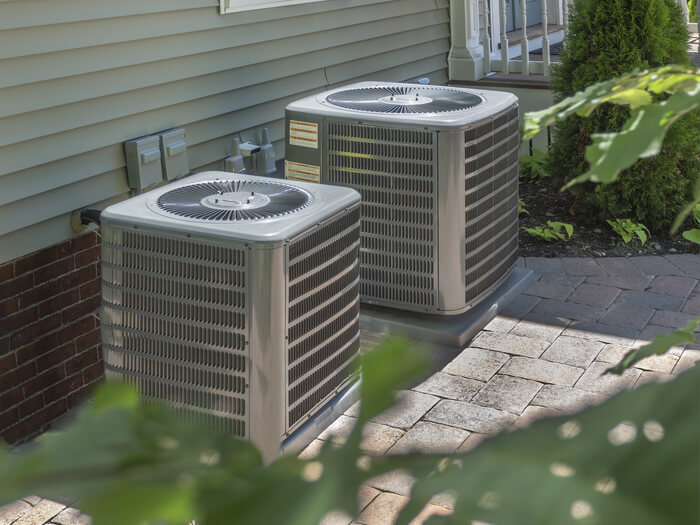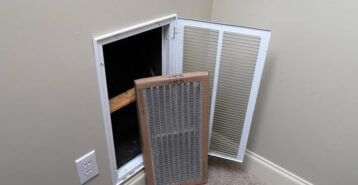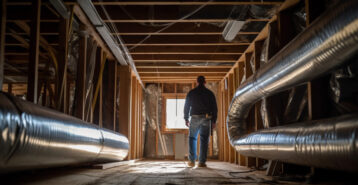When the scorching heat of summer settles in, finding ways to keep our homes cool becomes a top priority. Air conditioning is the go-to option for many, but it can be expensive to run continuously, and not everyone can afford the higher utility bills. In this quest for cost-effective cooling solutions, the whole house fan emerges as a viable and energy-efficient alternative. In this article, we will explore what a whole house fan is, how it works, its comparison to attic fans, the pros and cons of using it, and things to consider when installing one.
What Is a Whole House Fan and How Does it Work?
A whole house fan is a ventilation system designed to cool down an entire house by drawing in cool outdoor air and expelling hot indoor air. Unlike air conditioning, which cools the air using refrigeration, a house fan relies on the principle of natural ventilation to create a cooling breeze throughout the home.
The house fan is typically installed in the ceiling on the top floor of the house, preferably in a central location like the hallway or a large open space. When turned on, the fan pulls air from the living spaces and expels it into the attic. As the hot indoor air is pushed into the attic, it escapes through the attic vents, allowing cool air from outside to be drawn in through open windows and doors. This creates a flow of air that refreshes and cools down the entire house, effectively reducing indoor temperatures.
The cooling power of a whole house fan is most effective during the evening and early morning when the outside air is cooler. By running the fan during these times, homeowners can pre-cool their homes and reduce the need for air conditioning during the day.
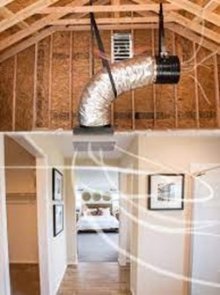
Source: https://www.energy.gov/energysaver/cooling-whole-house-fan
How Much Does a Whole House Fan Cost?
The cost of a whole house fan can vary depending on the size of the house, the size and speed of the fan, the type of motor, the fan brand, and the cost of labor. The typical cost range to install a whole-house fan is between $900 and $2,500, with a national average cost of $1,700.
We look deeper into the costs in our Whole House Fan Cost Guide.
Whole House Fan vs. Attic Fan: What’s the Difference?
Whole house fans and attic fans are both ventilation systems, but they serve different purposes and operate in distinct ways.
Whole House Fan
- Purpose: The main purpose of a house fan is to cool down the entire living space of a home.
- Installation: It is installed in the ceiling on the top floor of the house.
- Operation: It draws air from inside the living spaces and expels it into the attic, creating a flow of air that cools down the entire home.
- Best Use: Ideal for homes in regions with cooler evenings and nights.
Attic Fan
- Purpose: The primary purpose of an attic fan is to cool down the attic space, preventing it from trapping heat and potentially causing damage to the roof and other structural elements.
- Installation: It is installed on the roof or in a gable vent in the attic.
- Operation: It exhausts hot air from the attic to the outside, reducing attic temperatures.
- Best Use: Suitable for homes in regions with hot climates, as it helps reduce the strain on air conditioning systems by keeping the attic cooler.
Pros and Cons of Using a Whole House Fan
A whole house fan can be a great option for homeowners looking to improve indoor air circulation and reduce cooling costs. However, like any home improvement solution, it’s important to weigh the benefits and drawbacks before making a decision. Below, we explore the pros and cons of using a whole house fan to help you determine if it’s the right choice for your home.
-
Pros
- Energy Efficiency & Air Quality
- Environmentally Friendly
- Quick Cooling
-
Cons
- Weather Limitations & Open Windows
- Noise Levels
- Limited Cooling in Multi-Story Homes
Pros
- Energy Efficiency: Whole house fans are much more energy-efficient than air conditioning systems. They use a fraction of the energy required by AC units, resulting in lower utility bills.
- Improved Indoor Air Quality: By constantly drawing fresh air into the house and expelling stale indoor air, house fans help maintain better indoor air quality, reducing the risk of allergens and pollutants buildup.
- Environmentally Friendly: Due to their low energy consumption, house fans have a smaller carbon footprint compared to air conditioners, making them a greener cooling option.
- Quick Cooling: Whole house fans can rapidly cool down a home by several degrees within minutes, providing relief during hot summer days and evenings.
Cons
- Weather Limitations: The effectiveness of house fans depends on the outside air temperature. In extremely hot and humid climates, they may not be as effective in cooling the house.
- Noise Levels: Some whole house fans can be noisy, especially if they are not well-maintained or of lower quality. This can be a downside for homeowners seeking a quieter environment.
- Dependence on Open Windows: To achieve effective cooling, the fan needs to draw air from outside, which means homeowners need to keep windows and doors open. This may be a security concern for some, and it also allows outdoor pollutants and allergens to enter the home.
- Limited Cooling in Multi-Story Homes: House fans may not evenly cool multi-story homes, as the cooling effect is more pronounced on the top floor where the fan is installed.
Things to Consider When Installing a Whole House Fan
Before installing a whole house fan, there are several important factors to keep in mind to ensure it meets your needs and functions efficiently. From the size of your home to your local climate, these considerations can make a big difference in how effective the fan is at keeping your home cool and comfortable. Below, we’ve outlined the key things to consider before moving forward with installation.
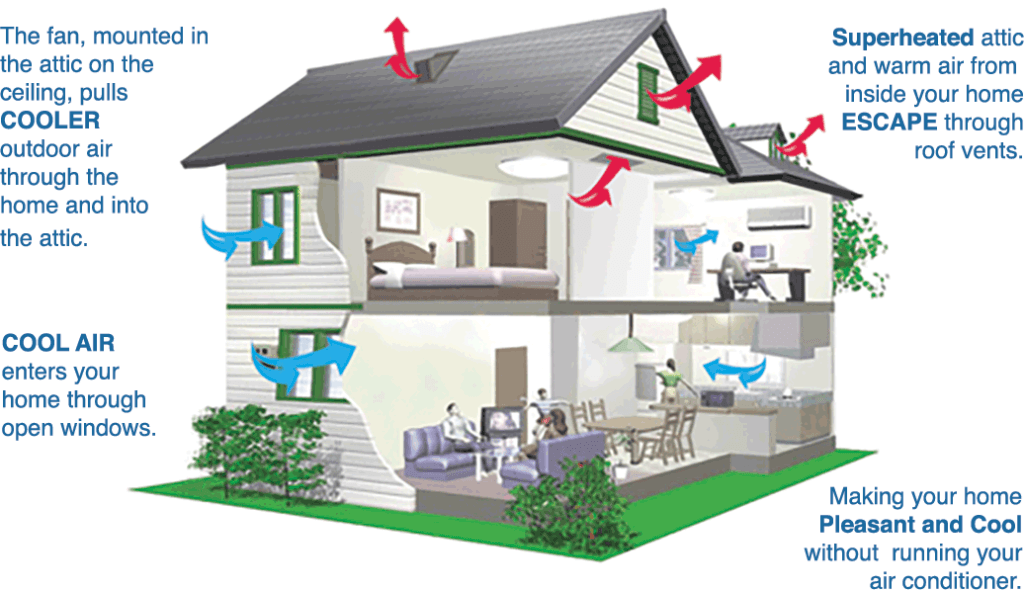
Source: https://www.centricair.com/how-does-a-whole-house-fan-work-video/
Climate
Consider your local climate and whether your area experiences cool evenings and nights, as this will affect the overall effectiveness of the whole house fan.
Size and Airflow Capacity
Choose a house fan with an appropriate airflow capacity suitable for the size of your home. A fan that is too small may not cool your house adequately, while one that is too large may cause excessive noise and discomfort.
Insulation and Sealing
Ensure that your home is well-insulated and properly sealed before installing a house fan. Proper insulation helps retain the cool air generated by the fan, maximizing its efficiency.
Window Placement
The effectiveness of a house fan depends on the availability and positioning of windows for air intake. Ensure that you have enough windows strategically placed to facilitate the air circulation.
Noise Level
Consider the noise level of the whole house fan. Look for models with sound-dampening features or lower decibel ratings for a quieter cooling experience.
Installation and Maintenance
Professional installation is recommended to ensure the fan is correctly positioned and operates optimally. Additionally, regular maintenance, such as cleaning the fan blades and lubricating the motor, will prolong its lifespan and maintain its efficiency.
Is a Whole House Fan Right for you?
A house fan is a valuable cooling option that can significantly reduce the reliance on air conditioning and save on energy costs. By harnessing the power of natural ventilation, it provides a refreshing and energy-efficient way to cool down your home. While it may not be suitable for all climates and households, those living in regions with cooler evenings can reap the benefits of this eco-friendly and cost-effective cooling solution. Just remember to consider your climate, house size, noise preferences, and installation requirements before deciding to install a house fan in your home. With proper planning and usage, a whole house fan can be a breath of fresh air for your living spaces, providing comfort and relief during the hottest months of the year.
Compare top-rated HVAC pros in your area.
Read real homeowner reviews, explore qualifications, and view promotions. Modernize makes it easy to browse professionals and find one that will be perfect for your project.







